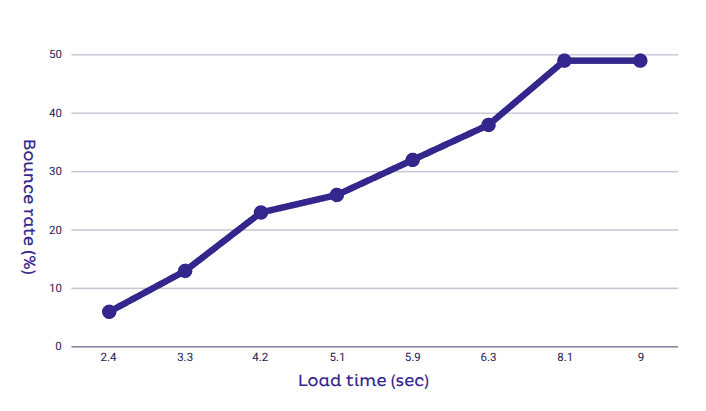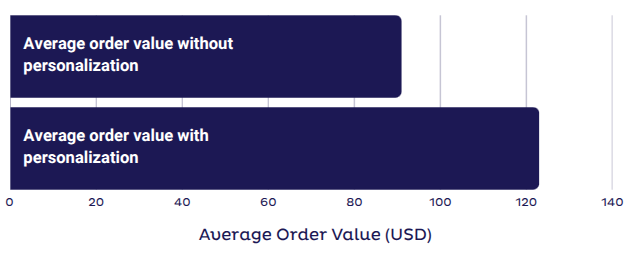The eCommerce world right now looks nothing like it did just a few years ago. With more competition, higher customer expectations, and tighter margins, online stores need more than just growth, they need scalability. That means building a business that can handle more demand, serve more customers, and process more orders, all without the stress, cost, and chaos that usually comes with it.
It’s not about doing more. It’s about doing things better. In this guide, we’ll break down the most effective strategies for scaling your eCommerce business sustainably, and staying competitive while you grow.

What Is Scaling in eCommerce?
Let’s cover this first: scaling isn’t the same as growing. Growth usually means adding more, more people, more budget, more tools, just to keep up. Revenue might increase, but so do your costs. You’re working harder and spending more just to stay ahead.
Scaling is different. It’s about getting more from what you already have. More orders, more revenue, more happy customers, but without doubling your workload or hiring a massive team. You’re keeping your overhead low while your results go up. That’s real efficiency. Think of it like this: growth means hiring five new people to handle a spike in orders. Scaling means your system handles the spike automatically, while your team can focus on the bigger-picture strategy.

How to Scale an eCommerce Business?
There are two main ways to scale:
- Use your internal resources smarter
- Plug in external tools and services that scale with you
Let’s be honest, building everything in-house is time-consuming and expensive. Whether were talking about developing your own search engine, running customer service 24/7, or trying to manage inventory across channels manually… it adds up fast. And it rarely leads to the eCommerce scalability and performance needed to stay competitive.
That’s why smart eCommerce teams lean on outsourcing and external tools that are designed to grow with them. These are battle-tested solutions built to handle more traffic, more complexity, and more customers, without you needing to build a thing from scratch. And the best part? They work in the background, scaling automatically as your business grows.
In this article, we’ll focus on that second path of scaling an eCommerce business: using external tools and services to scale smarter and faster. If you want to read more on optimizing, check out Omniconvert’s guide on scaling eCommerce from the inside.
Best Strategies Helping You Scale Your eCommerce Business
Scaling an online business isn’t about working more, it’s about building smarter systems that let you do more with less. Below are proven strategies that help ambitious brands grow sustainably, without drowning in operational overhead.
1. Leverage Automation and Outsourcing
If there’s one rule to keep in mind when scaling, it’s this: don’t try to do everything yourself.
One of the most effective ways to scale is by combining automation and outsourcing. These two strategies free up your team’s time, reduce manual errors, and allow you to stay focused on what actually drives growth, like product development, branding, and customer experience.
Outsource what’s not core to your business.
Tasks like customer support, logistics, and paid media are essential, but they don’t need to be run in-house. Bringing in specialized partners lets you tap into expert-level performance without the hassle of hiring and managing larger teams.
Examples:
- Using a third-party logistics provider means you can handle sudden increases in order volume without touching your warehouse setup.
- Outsourcing customer support to professionals ensures customers get fast, high-quality help, even during busy seasons, while your internal team stays focused on scaling.
Automate what’s repeatable.
From abandoned cart emails to order routing, there are countless repetitive tasks that can (and should) be automated.
Here’s where automation shines:
- Email marketing: Set up flows to recover carts, onboard customers, and reactivate inactive buyers — all while your team sleeps.
- Inventory management: Automatically track stock, receive low-stock alerts, and trigger reorders before items sell out. No more manual stock checks.
These are the kinds of backend wins that silently power sustainable growth.
2. Pick a Scalable eCommerce Platform
Here’s the thing: even with great marketing and amazing products, your growth will hit a wall if your platform can’t handle the load.
You need a platform built not just for function, but for eCommerce scalability and performance — especially when traffic spikes or your catalog grows. If it slows down when traffic spikes, or can’t support advanced integrations, it’ll end up costing you sales. For example, even just a 1-second delay in page load time can lead to a significant drop in conversions and customer trust.

So, make sure your platform isn’t just right for where you are today, but also for where you want to be next year. Here are a few options for easily scalable eCommerce platforms:
Shopify Plus
- Built for high-volume sellers and peak-season traffic.
- Automation tools like Shopify Flow let you streamline repetitive tasks.
- Connects easily with third-party tools (like Doofinder), ERPs, and apps that power scale.
BigCommerce
- Flexible enough for custom solutions, robust enough for enterprise.
- Built-in SEO features help grow your visibility without external tools.
- Great for omnichannel, sync your catalog across Amazon, eBay, social platforms, and more.
Magento (Adobe Commerce)
- Ideal for businesses with complex catalogs and global needs.
- Fully customizable if you have a dev team or agency support.
- Scales beautifully with large inventories, B2B functionality, and multilingual stores.
|
There’s many eCommerce platforms to choose from, each with their own strengths and weaknesses. To learn more, check out our article on eCommerce platforms. |
3. Enhance Product Discovery & Search
If customers can’t find what they’re looking for, they’re gone. Fast.
That’s why search and product discovery are critical as you scale. The more products you add, the more complex navigation becomes, and the more important it is to have a search solution that doesn’t just work, but works smart.
When you have more than fifty products in your assortment, a basic search bar won’t cut it. Customers expect fast, personalized, relevant results. That’s where external scalable ecommerce solutions come in. In fact, these 19 site search optimization tips show exactly how to turn search into a powerful conversion engine.
With a solution like Doofinder, you get:
- Personalized results based on browsing behavior and search intent
- Intelligent product suggestions that increase average order value
- Filters, synonyms, typo correction, and predictive search, all out of the box
- Seamless integration with your current eCommerce platform
The best part? Doofinder scales with your business automatically. Whether you’ve got 1,000 SKUs or 100,000, it delivers the same speed and relevance every time, without slowing down your site or your team.
When search works this well, customers stay longer, bounce less, and buy more. That’s not a small search bar UX upgrade, it’s a growth strategy.
4. Streamline Customer Support
Customer support isn’t just about solving problems — it’s one of the most powerful touchpoints in your entire customer journey. Get it right, and you build loyalty. Get it wrong, and 9 out of 10 customers won’t give you a second chance.
As your eCommerce is scaling, support needs to keep pace, not just in volume, but in quality. Whether you choose to outsource or keep it in-house, the goal is the same: fast, helpful, frictionless experiences at every interaction.
Outsourcing support can be a smart move, especially if you want 24/7 coverage, multilingual service, or flexible staffing without growing your internal team. It gives you scalability from day one and frees up your time to focus on growth.
If you’re keeping support internal, you’ll need the right tools to make it work:
- Start with a centralized helpdesk to unify email, chat, social, and more — so no message gets missed.
- Build a self-service hub with FAQs or a knowledge base. When customers can solve simple issues on their own, your team stays focused on the stuff that really matters.
- Add AI-powered chatbots to instantly handle repetitive questions. Think order status, shipping updates, return policy.
And don’t forget about integrations. A connected CRM gives your support agents full visibility into each customer’s journey, so responses are not just fast, but personal. The bottom line is that scaling support isn’t just about hiring more agents. It’s about building smart systems that grow with you while they still make every customer feel like they matter.
Want to make your store’s support faster and more helpful? We’ve got 25 tips to improve your store’s customer support.
5. Maximize Marketing and Customer Retention
To effectively scale marketing and customer retention, businesses should focus on personalization, customer loyalty programs and data-driven strategies.
Personalization Strategies
For eCommerce, one of the biggest opportunities lies in search. It’s where high-intent users show up when they’re ready to buy — and where smart internal search strategies can make or break the customer experience.
Imagine this: a user browses trainers on Monday, comes back on Thursday, types “Nike” in the search bar, and sees exactly the right options based on their behavior. That’s an excellent use of data. Even better: with a smart tool like Doofinder, it happens automatically.
Doofinder’s AI-driven search engine learns from every click, view, and scroll, delivering personalized search results and product recommendations based on what each customer is likely to engage with. Stores that use Doofinder have reported conversion increases of up to 20% — just by making search smarter.

Customer Retention Strategies
Once you’ve brought someone to your store and got that first sale, the real game begins: keeping them coming back.
Customer retention isn’t just about sending a thank-you email or offering a discount code. It’s about building many experiences that reward loyalty, like smart product suggestions based on past orders, easy reordering, and exclusive perks for repeat buyers. When you personalize the journey, you make it easier for customers to stick around.
Here are a few practical ways to boost retention through personalization and smart automation:
- Show “buy again” buttons for past purchases right on the homepage or account dashboard
- Use personalized email flows (e.g. “You might need a refill” or “Time to reorder?”)
- Offer loyalty rewards for repeat purchases or specific milestones
- Display complementary products based on order history, not just browsing
- Remind them of items left in wishlists or carts, tailored by product category
- Give early access to sales or new launches for returning customers
- Use dynamic product recommendations on product and checkout pages to increase engagement without being pushy
The more relevant and effortless you make the experience, the more reasons customers have to come back, and to stick with your brand over the long term.
Fun fact: 70% of retailers that invested in personalizing their customer experience saw an ROI of at least 400%. Want to know the ROI of your eCommerce business? Check out our ROI calculator.
Data Driven Strategies
Every time someone types into your search bar, they’re telling you exactly what they want. That data is gold, and with the right tool, it becomes your most valuable business insight. Most online stores don’t tap into this. They treat search as just another feature. But with a smart search solution like Doofinder, your search bar becomes a window into real customer intent.
You don’t just see what’s selling — you see what people are looking for, even if it’s not in your catalog yet. That means you can spot demand trends early, fix product gaps, and adjust your offering before competitors do.
6. Automate Inventory and Order Management
The inventory management of an online store might not be the flashiest part of your business, but when it’s running smoothly, everything else just works. When it’s not? You’re dealing with stockouts, delayed shipments, frustrated customers, and a lot of manual checking that slows down your team.
That’s why automation here is a game changer.
As your store scales, so does the complexity of tracking inventory across channels, syncing stock levels in real time, and ensuring accurate fulfillment. Doing it manually doesn’t scale, but using smart inventory and order management tools does.
With the right system in place, you can:
- Automatically update inventory across all sales channels
- Get low-stock alerts and auto-generate purchase orders before products sell out
- Route orders to the best fulfillment center based on stock and location
- Avoid overselling or disappointing customers due to incorrect availability
This kind of backend automation protects your brand reputation, keeps fulfillment friction-free, and gives you the confidence to scale up your product catalog or sales volume without fear of chaos behind the scenes.

7. Simplify Payments and Financial Management
As your business grows, so do the financial moving parts: more transactions, more payment methods, more tax zones, more complexity. And if you don’t keep it streamlined, it’ll quickly become a bottleneck that holds everything back.
Simplifying your payment and financial systems means fewer errors, faster checkouts, easier reconciliation — and a much smoother experience for both your team and your customers.
To scale smoothly, make sure your payments solution:
- Supports multiple currencies and local payment methods (especially if you’re expanding internationally)
- Offers fast, mobile-optimized checkout flows to reduce cart abandonment
- Integrates with your accounting and ERP systems to automate reporting and bookkeeping
Bonus points if it helps you spot trends in sales performance, revenue by channel, or average order value over time. When payments and finances are simplified, scaling becomes a matter of adding volume — not complexity. And that’s exactly the goal.
Final Thoughts: Scale Smarter, Not Slower
Scaling your eCommerce business isn’t about doing everything, it’s about doing the right things in smarter ways. The strategies in this guide are built around one simple truth: you can’t grow sustainably if your systems can’t keep up.
From automating operations to outsourcing where it counts, from personalizing the customer journey to simplifying the backend, every improvement you make to your stack should help your business do more with less effort.
That’s where tools like Doofinder come in. Scaling doesn’t have to mean building everything from scratch. It means plugging in proven solutions that do the heavy lifting for you — so you can focus on building a business that’s not just bigger, but better.Ready to see how smart search can drive your next stage of growth?
Try Doofinder free for 30 days and turn your traffic into loyal customers — at scale.








